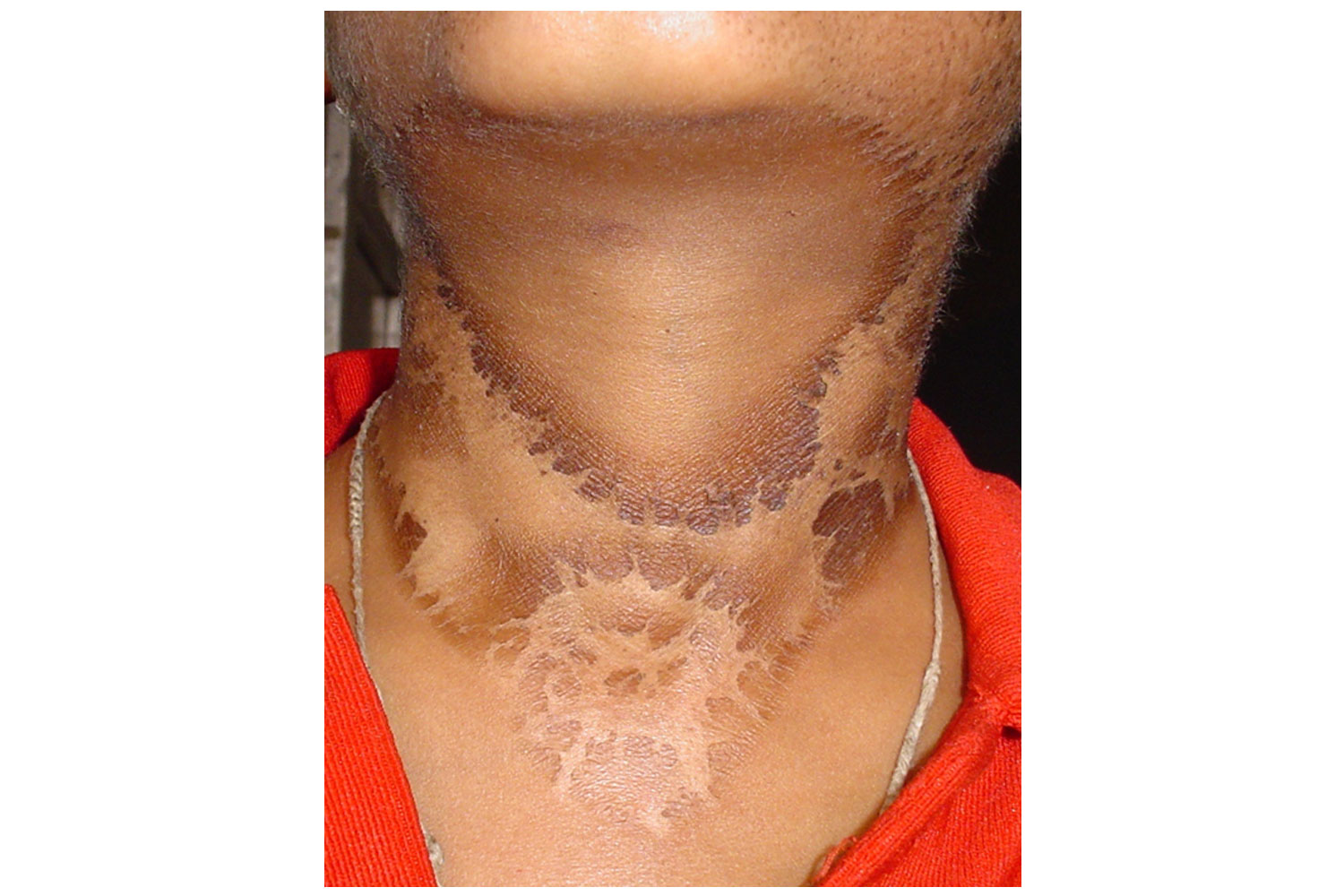2376-0249
Clinical Image - International Journal of Clinical & Medical Images (2014) Volume 1, Issue 4

Author(s): Int J Clin Med Imaging 2014
Here we report the case of an eight year old male child, belonging to a low socioeconomic family who presented with two months history of erythematosquamous lesions involving the photo exposed areas which healed to leave behind dry, rough, hyperpigmented and burnt out lesions especially in the region of neck. There was associated history of diarrhoea, photosensitivity and irritability. The staple diet consumed by the patient was maize. Examination revealed dry, rough, dark brown hyperkeratosis and crusted plaques involving the neck and upper part of chest. The tongue was reddish and flattened. A diagnosis of pellagra was made and the patient treated by oral niacnamide. The patient dramatically improved after one month of therapy. 1. Discussion: Pellagra is a nutritional deficiency disease caused by a chronic lack of niacin, or tryptophan or excess of leucine in the diet. Pellagra is classically described by “the four Ds”: diarrhea, dermatitis, dementia and death. Pellagra is a vitamin deficiency disease most frequently caused by a chronic lack of niacin in the diet (either due to decreased intake of niacin or tryptophan, or by excessive intake of leucine as in maize). It may also result from alterations in protein metabolism in disorders such as carcinoid syndrome (conversion of tryptophan into serotonin). Crohn’s disease, gastroenterostomy and chronic alcoholism causes pellagra due to decreased absorption of niacin in the gut. Drugs like isoniazid, chloramphenicol, and fluorouracil can precipitate pellagra. The diagnosis is usually clinical, but can be confirmed by the measurement of blood levels of tryptophan or urinary metabolites such as 2-pyridone/N-methylniacinamide ratio <2 or NAD/NADP ratio in erythrocytes. Diagnosis is usually confirmed by rapid improvement in the symptoms in patients after the administration of niacin (50–500 mg/day).
 Awards Nomination
Awards Nomination

